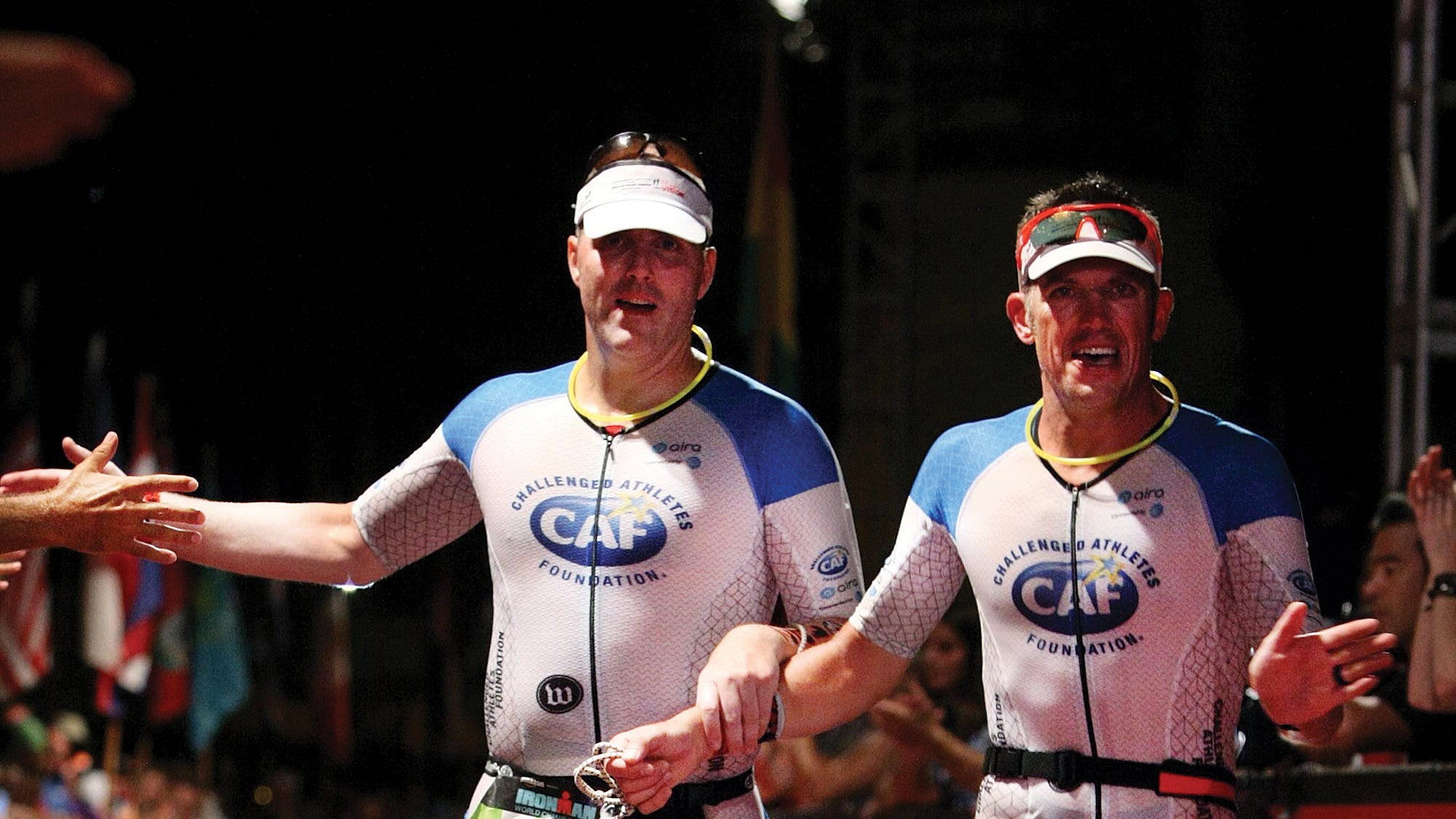This Former Collegiate Swimmer Is A Record-Setting Paratriathlete

It’s early on a Sunday morning and Erich Manser is heading out for a run. He laces up his shoes, kisses his wife and two daughters goodbye, and hits the road near his home in Littleton, Massachusetts. Sticking close to the thick white line marking the street’s shoulder, Manser relishes in the quiet as his feet strike the pavement, powering his lumbering 6-foot-3-inch frame over the undulating terrain.
Over the years, Manser has memorized nearly every bit of this running route. Not just out of repetition, but out of necessity. Manser, 46, is nearly blind. He compares his vision to looking through a drinking straw with the narrow opening smeared with Vaseline. Diagnosed with the degenerative disease retinitis pigmentosa when he was just 5 years old, Manser’s vision has slowly deteriorated ever since. Although he currently has enough sight to still navigate the roads around his house, he may one day lose his vision altogether.
But that hasn’t stopped him from soaring to the top level in endurance sports. In 2017, Manser posted 11:10:28 at Ironman Maryland, at the time the fastest-ever by a visually impaired athlete with a guide. He raced at the Ironman World Championship last fall as the only visually impaired athlete in the field. And this April, he’ll race in his 10th-straight Boston Marathon.
Still, despite being one of the most accomplished para-athletes in the world, Manser, a software engineer at IBM, initially refused to accept the “disabled” label. “Until triathlon, I competed as an able-bodied athlete, and I’m proud of that,” says Manser, who honed his competitive edge first by excelling in baseball and basketball as a kid before taking up swimming, eventually earning an NCAA Division I scholarship to Northeastern University. Later, when he took up running to shed some of the 80 pounds he’d put on after college, he eschewed suggestions that he should run with a guide.
“I’d just shadow another runner the entire way,” he recalls. “They were my guides without even knowing it.”
When Manser turned to triathlon, he finally embraced his status as a paratriathlete—and his need for a guide. “Following other runners on a course or staying on the black line in the pool is one thing,” he says. “Swimming in open water and riding a bike at top speed for hundreds of miles is another.”
Matt Smith, a Boulder, Colorado-based triathlete who has been Manser’s guide in two Ironmans, says he is blown away by his friend’s humility—and his talent. “Being in the sport of triathlon for almost 20 years now, it’s all too common to see someone focused only on themselves,” says Smith. “Erich is thankful for the opportunity to be out there and race with the rest of the field.”
While Manser has relished bolstering his athletic resume, he prides himself more on his role in motivating others with visual impairments to get into triathlon—alongside with redefining what it means to be a disabled athlete.
“There’s this misconception that being disabled means you are a lesser athlete. I’d like to change that. We may be coming from a more dif cult place, but every athlete has his or her own challenges,” says Manser. “And when the gun goes off, we are all shooting for the same finish line.”